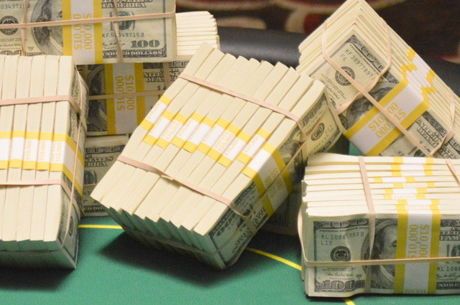Strategy Vault: Picking Your Spots in PLO

Digging deep into the PokerNews strategy archives can lead to a buried treasure, so we'll be unearthing a few gems for your viewing pleasure. For this edition of the Strategy Vault series, we're here to discuss picking your spots in pot-limit Omaha (PLO).
I had the opportunity to play a private $10 PLO tournament on Full Tilt Poker that drew 84 runners. After about four hours of play, I took down the event, but there was one hand halfway through the final table that provoked a fair amount of thought in my mind, both during the hand and after the tournament was over. Since PLO is one of the components of eight-game mix, and there is often a smaller buy-in tournament that many recreational players can attempt to play at the World Series of Poker, let's take a look at the hand.
To set the stage, five players remained in the tournament. The blinds were 1,500/3,000, and I had a huge chip lead. The stacks around the table were as follows:
Small blind: 45,000
Big blind: 32,000
Under the gun: 17,000
Me (Cutoff): 138,000
Button: 19,000
I was dealt a powerful PLO starting hand, 8♥9♣10♣J♣. Although at first glance to the untrained eye, the hand may not seem that great, statistically this hand is one of the absolute best starting hands in PLO. The reason why is because it has so much potential for building a straight. There are at least 20 different straights possible with the hand, most of which make the nut straight. This particular variant also had some weak flush potential around clubs.
After the under-the-gun player folded, I opened with a pot-sized raise of 10,500. There's an argument that could be made for limping into the pot in an effort to try to trap one of the short stacks into committing himself to the pot by raising pot with a marginal hand, but I had been playing very aggressively at the final table. Limping into the pot could have set off alarm bells in my opponents' minds; there was more deception value to be gained by raising, since I had been doing it so often.
The button folded, and the small blind then called for roughly 20% of his remaining stack before the big blind reraised all in. With the action back to me, I did two things: I groaned; and then I hit the "Time Bank" button to give myself as much time as possible to piece together what the best decision would be. It should be clear that my problem was not the reraise from the big blind, in and of itself. After all, I had one of the best possible starting hands in PLO and the big blind could easily be "squeezing" with a marginal hand there, given the extra dead money represented by the small blind's call. I didn't believe that was necessarily the case — he hadn't gotten out of line at all at the final table and was more likely raising very strong — but it was possible. My problem was the small blind behind me, who was yet to act.
There were several different outcomes for the hand. If I reraised and the small blind folded, I'd have a great shot at eliminating the big blind. If I won the hand, I would have 182,000 chips four handed, with my next closest competitor having 35,000. If I lost the hand, I would have 106,000 chips five handed, with my next closest competitor having 74,000.
On the other hand, if I reraised and the small blind called, lots of different thing could happen. If I won both pots, I'd have 215,000 chips three handed and could easily close out the tournament. If I won only the side pot, I'd have 118,000 four handed with my next closest competitor on 96,000. If the small blind won both pots, he would be the new chip leader with 122,000 to my 93,000 four handed. If the small blind won the side pot and the big blind won the main pot, the stacks would be small blind with 24,000, big blind with 96,000 and me with 93,000.
As you can see, having the small blind yet to act behind me was a big problem that could easily change the tide of the tournament for me. Up to that point I had cruised my way through the nine-handed final table, increasing my stack from 70,000 to 138,000. I felt like I was one of the better players at the table and in a position to really pound on the short stacks. Did I really want to risk all that by playing a three-handed pot with all of the chips in preflop for a third of my stack?
I decided that the answer to that question was no. Even though I had one of the best starting hands possible in PLO, it was not a good spot for me. I could easily fold my hand, preserve my stack at 128,000, and more importantly, preserve my position as the chip leader. Then I could look for better spots — heads-up pots where my opponent was more likely to be raising light — to turn up the pressure. As it turned out, the small blind folded as well. The end result was that the small blind and the big blind traded chip positions and I lost 10,000. I was still in command of the tournament and went on to knock out the last four players over the next fifteen minutes to take it down.
Many of today's generation of players are happy to get all of their chips in preflop when they know they have the best hand. Then if they lose the hand they can say, "Well at least I got my chips in good." That may be true, but much of the skill component of poker comes from making better decisions than your opponents. The way to truly maximize your advantage is by playing after the flop comes down and forcing them to make more decisions on every hand — especially in a game like PLO, where preflop hand values run much closer than they do in a game like hold'em. Otherwise you're just flipping coins.
This article was originally published on Mar. 21, 2009.
Want to learn more about the different variants of poker? Check out the Poker Rules section here on PokerNews.
To stay on top of the poker world, follow us on Twitter and like us on Facebook.








